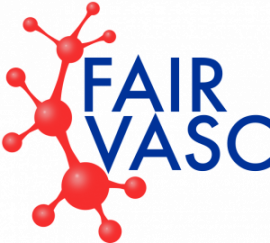- What does FAIRVASC mean for someone living with Vasculitis?
In recent years there has been a boom in research projects that developed large scale patient registries. These are created by joining a database of several centres treating patients with a specific disease into one large database. This procedure is aimed at increasing the number of data samples so more detailed research can be performed. This is especially important for rare diseases such as vasculitis, as the databases of one centre are too small to be able to analyse data with great accuracy. In this way, national vasculitis registries have been developed in recent years and some examples include GEVAS (Germany), POLVAS (Poland) or UKIVAS (Great Britain). The combination of national registries will give the opportunity to characterize vasculitis on a very large scale. By analysing the data, one can query, for example, questions about the age at onset, or the frequency of occurrence of particular symptoms or complications. Such characteristics will allow scientists to better understand different aspects of diseases that may in the future allow better treatments to be developed.
- What does creating a registry look like? Where is my information stored?
While creating a registry, scientists from a given centre establish a list of information they would like to have – such as age at the time of onset of disease, gender, occupation, symptoms, abnormalities in imaging tests or the type and effect of the treatment. Then, in cooperation with IT specialists, a computer system/database is created into which information about patients can be entered. The creators of registries must pay special attention to the protection of personal data. When patients are added to the database, the system gives them an identification number so that the data on the course of the disease and treatment cannot be linked with the name and surname of the patient.
Access to the registry is password-protected and only persons in charge of registry can obtain access. The database itself is saved on servers most often owned by universities, which also attach great importance to the protection of personal data. After explaining the purpose of the registry, how it is organized and how a participant might withdraw their data if they wish to, a project researcher can obtain a patient’s written informed consent. Only after a patient has signed an informed consent can his/her data be entered into the registry.
- What information about me is stored in a registry?
Each registry has its own set of information about patients. The most frequently collected variables include demographic data, such as age, gender, place of residence, occupation; data on the disease (symptoms, age at diagnosis, stay in the intensive care unit) and treatment (duration, type of drugs, treatment effect, complications). Registries can fill in the data retrospectively (backwards) or prospectively (on an ongoing basis, during regular visits with the patient). Discrepancies in the type of data between national registers and the fact that each registry adopts its own definitions of different medical terms represent the greatest challenges of the FAIRVASC project.
Sometimes registries create biobanks. A biobank is a collection of biological material – e.g., cells extracted from the patient’s blood, serum, plasma or urine from patients collected in a registry. It is a material for planned laboratory tests, such as the search for biomarkers – substances in the blood that may be important in the diagnosis or monitoring of disease activity. Such samples are labelled with the number under which the patient appears in the registry and only laboratory personnel have access to the material.
- What is the difference between national registries and FAIRVASC?
National registries hold individual patient records. FAIRVASC is not a combination of them but is designed to ask specific questions to the indicated registries and to provide a collective result for the FAIRVASC user. FAIRVASC researchers only see the result of a specific query and do not have access to local registries.
- Can I see my information? or Who can see my information?
Both the national registries and FAIRVASC do not present the personal data of patients. In the national registries, they appear under the numbers assigned by the system. FAIRVASC itself does not have direct access to the records of individual registries. It is designed to ask a question to each of the integrated databases in order to obtain an answer in the form of a number (e.g. how many Swedish and Czech patients had severe complications of immunosuppressive treatment). Registries and FAIRVASC data collection, storage, and use are being compliant with local and European data protection laws to ensure security and proper use of the data.
- Why should I participate in a registry?
Participation in the registry is fully voluntary, and refusal to participate in it does not affect the process of diagnosis or treatment of an individual patient. The data of each patient, especially in the case of rare diseases, are extremely valuable and can have a real impact on increasing the knowledge about vasculitis and improving the quality of care for patients.
- Can I withdraw from a registry?
Each participant of the registry at every stage of its creation and operation has the right to withdraw and be forgotten.
